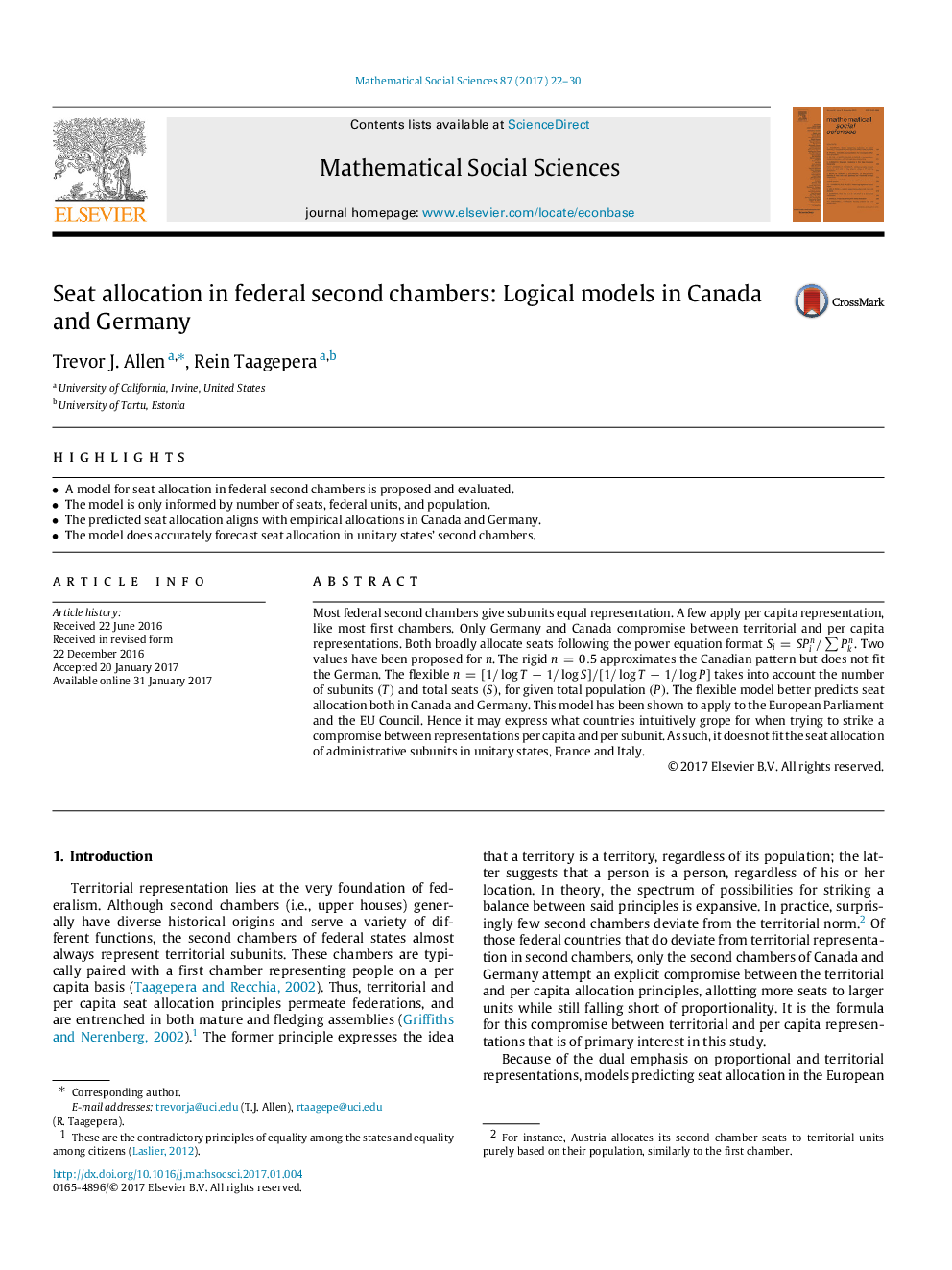| کد مقاله | کد نشریه | سال انتشار | مقاله انگلیسی | نسخه تمام متن |
|---|---|---|---|---|
| 5102146 | 1479731 | 2017 | 9 صفحه PDF | دانلود رایگان |
عنوان انگلیسی مقاله ISI
Seat allocation in federal second chambers: Logical models in Canada and Germany
ترجمه فارسی عنوان
تخصیص صندلی در اتاق دوم فدرال: مدل های منطقی در کانادا و آلمان
دانلود مقاله + سفارش ترجمه
دانلود مقاله ISI انگلیسی
رایگان برای ایرانیان
موضوعات مرتبط
مهندسی و علوم پایه
ریاضیات
ریاضیات کاربردی
چکیده انگلیسی
Most federal second chambers give subunits equal representation. A few apply per capita representation, like most first chambers. Only Germany and Canada compromise between territorial and per capita representations. Both broadly allocate seats following the power equation format Si=SPin/âPkn. Two values have been proposed for n. The rigid n=0.5 approximates the Canadian pattern but does not fit the German. The flexible n=[1/logTâ1/logS]/[1/logTâ1/logP] takes into account the number of subunits (T) and total seats (S), for given total population (P). The flexible model better predicts seat allocation both in Canada and Germany. This model has been shown to apply to the European Parliament and the EU Council. Hence it may express what countries intuitively grope for when trying to strike a compromise between representations per capita and per subunit. As such, it does not fit the seat allocation of administrative subunits in unitary states, France and Italy.
ناشر
Database: Elsevier - ScienceDirect (ساینس دایرکت)
Journal: Mathematical Social Sciences - Volume 87, May 2017, Pages 22-30
Journal: Mathematical Social Sciences - Volume 87, May 2017, Pages 22-30
نویسندگان
Trevor J. Allen, Rein Taagepera,
